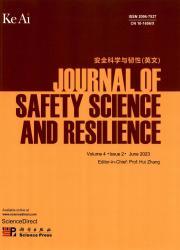统计寿命在评估地震恢复力增强政策中的价值:一个陈述偏好二元选择实验
IF 3.4
Q1 PUBLIC, ENVIRONMENTAL & OCCUPATIONAL HEALTH
引用次数: 0
摘要
决策者需要充分了解统计寿命(VSL)的价值,以决定是否投资于适当的地震脆弱性降低和恢复力增强措施。VSL衡量的是公众在一定时期内为减少特定风险(例如,死于地震)造成的死亡率所赋予的货币价值。由于缺乏适当的模型来估计特定社区的特定环境VSL,过去的研究采用了诸如将估计的VSL用于其他目的(例如,交通和环境安全)或其他国家(例如,美国)等方法。这可能导致对VSL的低估或高估,挪用用于减少地震脆弱性项目的资金,以及不利的经济、政治和社会后果。本研究提出了一种方法,遵循陈述偏好二元选择方法来估计支付意愿(WTP),以降低地震导致的死亡风险。所提出的方法用于量化伊朗的VSL,包括使用问卷调查来收集人们在投资各种降低风险措施时的选择所需的信息。它使用包含积极性和比例成分的测试来检查响应的一致性。采用回归模型估计被调查者的WTP和VSL。本文章由计算机程序翻译,如有差异,请以英文原文为准。
The value of a statistical life in assessing seismic resilience enhancement policies: A stated preference binary choice experiment
To decide about investments in appropriate seismic vulnerability reduction and resilience enhancement measures, policymakers need to acquire adequate insight into the value of a statistical life (VSL). The VSL measures the monetary value the public assigns to reducing mortality due to a specific risk (e.g., dying from an earthquake) over a given period. In the absence of appropriate models to estimate the context-specific VSL for a given community, past studies have resorted to approaches such as using the VSL estimated for other purposes (e.g., transportation and environmental safety) or other countries (e.g., the US). This can lead to under- or over-estimation of VSL, misappropriation of the funds for seismic vulnerability reduction programs, and adverse economic, political, and social consequences. This study proposes a methodology that follows the stated preference binary choice approach to estimate the willingness to pay (WTP) to reduce the risk of earthquake-induced mortalities. The proposed method, which is applied to quantify VSL in Iran, involves using a questionnaire to collect the needed information about people's choices when investing in various risk reduction measures. It uses a test containing positivity and proportionality components to check the responses’ consistency. Regression modeling is used to estimate the respondents’ WTP and VSL.
求助全文
通过发布文献求助,成功后即可免费获取论文全文。
去求助
来源期刊

安全科学与韧性(英文)
Management Science and Operations Research, Safety, Risk, Reliability and Quality, Safety Research
CiteScore
8.70
自引率
0.00%
发文量
0
审稿时长
72 days
 求助内容:
求助内容: 应助结果提醒方式:
应助结果提醒方式:


